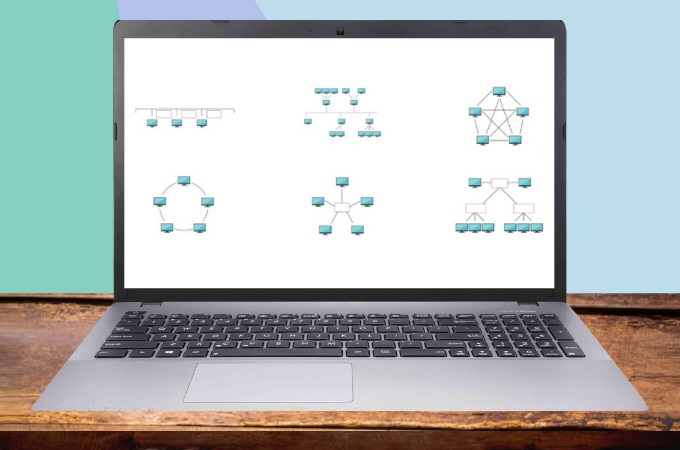
If you’re working with senior management, business owners, or administrators, you’ll undoubtedly need to organize all of the company’s networks. Making a network topology will be a great step in such a situation; nevertheless, this option must take into account the size and scope of the firm, its goals, and budget. System maintenance, visual visualization, and general performance measurement are all part of successful network topology management. On top of that, the key is to understand your requirements and objectives in order to design and manage the network architecture in the most effective manner for your organization.
Network Topology Introduction
- What is Network Topology?
- Types of Network Topology
- Network Topology Model Examples to Download
- Importance of Using Network Topology
What is Network Topology?
Based on the types of network topology, there are two methods for determining network topology: physical and logical. As the name implies, physical network topology refers to the actual links and connections among components and the connection lines, connectors, and so on. Logical network topology is more theoretical and conceptual and refers to the conceptual knowledge of how the network is configured the way it is and how data flows across it. Also, the physical or logical arrangement of your network’s nodes, objects, and connections is network topology.
Types of Network Topology
Star Topology

The most popular type of topology is a star topology, which is designed so that every device in the network is directly linked to one central place through cable, This central node, which acts as a server, regulates data transmission since information received from every node on the network must travel through it to reach its destination, and it also serves as a repetition, which helps reduce loss of information.
Mesh Topology

According to the network topology, this type of structure allows for two types of data transmission: navigation and overflow. When data is channeled, nodes utilize logic to find the quickest path to a destination, however, when information is flooded, data is given to all nodes in the network without the requirement for forwarding intelligence.
Ring Topology

Ring topology is the arrangement of nodes in a circle. The data can move either in one way or both ways across the ring network, for each device possessing precisely two contacts.
Tree Topology

Next on the types of network topology listed in this article in this posting is Tree Topology. This structure takes its name from the fact that the central node acts as a type of trunk again for the network, with nodes branching outward in a splinter group pattern. Whereas each node inside a star topology is directly connected to the central hub, the nodes inside a tree network are connected via a family hierarchy.
Bus Topology

A bus topology directs all network devices down a single wire that runs in a linear fashion from one end of the connection to the other, which is why it is also included in the types of topology also called the backbone topology. The flow of data on the system similarly follows the cable’s path, traveling in just one way.
Hybrid Topology

A hybrid topology is a network topology that combines 2 distinct network architectures. Choosing a network infrastructure over a standard topology is determined by the demands of a business, school, or customer. The selection is influenced by the number of workstations, their location, and the required network performance.
Network Topology Model Examples to Download
Create professional-looking types of network topology models with GitMind. You may also use this tool to brainstorm and generate other sorts of charts online. Furthermore, its drag and drop capability allows you to simply import files from your PC into your project if you wish to design a chart from scratch. Alternatively, if you need a template right away, you can utilize the one provided below.
Importance of Using Network Topology
For a variety of reasons, the architecture of your network is crucial. Above all, it is critical to how and how successfully your chosen types of topology operate. Choosing the correct topology for your company’s operating model may boost performance whilst making it simpler to discover problems, rectify mistakes, and distribute resources more efficiently throughout the network to guarantee optimal network health. A simplified and well-managed network architecture may improve power or data efficiency, lowering operating and maintenance expenses.
Conclusion
Overall, we recommend that you be very familiar with the demands and use needs of your network when it comes to network topology. One of the most important factors to consider is the total number of all nodes within the network, as this will determine whether it’s possible to employ a simpler topology or if you’ll need to invest in a more intricate system structure.
Leave a Comment